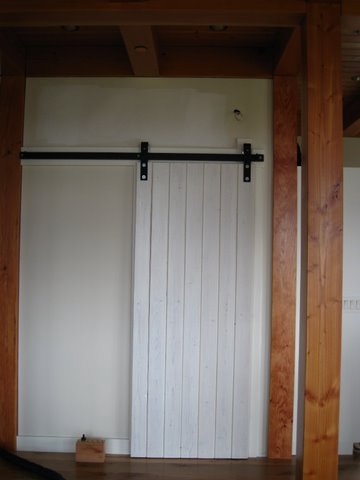by Stephen Schermerhorn
There are three major factors to consider when striving for chip free cuts in composite panels.
Panel Composition:
This includes how stable the substrate is, as well as the type of coating applied to the substrate.
Panels with a core of Medium Density Fiberboard (MDF) are fairly stable and fine grained, due in part to the homogenous fiberboard core. Panels with particle board as the core material tend to chip and flake, taking the surface coating with them.
The coatings used can be solid wood veneer, paper, vinyl, polyester, melamine, or high pressure laminate, to name some of the most common. Each has its own cutting characteristics. Coatings such as melamine are typically very thin and brittle and are likely to chip away with the substrate leaving jagged edges where the saw tips exit the board. Polyester and paper coatings are thinner, and more flexible, but tend to tear easily (they're also more sensitive to blade sharpness). High pressure laminates fair well due to their relatively thick surface (.030 of an inch or more).
The Cutting Edge:
There are two approaches commonly used when sawing composition panels.
The first is to use a scoring blade to pre-score the bottom coating without initially cutting through the core of the board. This is very effective, but it requires a secondary blade matched closely in width to the main cutting blade, and the machine to run them both.
The second approach is to use any number of specially designed blades that cut so cleanly through the board that they do not pull chips away from the edge of the cut.
The most common design is a high angle (typically 30 degrees) alternate top bevel (ATB) grind, combined with a very low or even a negative cutting (hook) angle. With this tip configuration, the points gradually exit the back of the panel with minimal cutting pressure perpendicular to the face of the laminate. This type of blade will not stay sharp as long as one with a triple chip design, but it will produce very clean chip-free cuts on both the top and bottom of coated panels.
The triple chip saw blade was designed to cut man made materials without dulling as quickly as traditional saw teeth. As in the alternate top bevel blade, the tips work in pairs. The leading tooth is referred to as a chisel tooth. It has a flat top with both corners chamfered at 45 degrees. The second tooth in the pair has a flat top without the chamfers and is ground .010" to .015" lower than the chisel tooth. The cut is divided into thirds, with the chisel removing the center and the raker tooth cleaning out the rest of the cut.
Although the triple chip blade requires less frequent sharpening, The high angle ATB produces the better cut.
Accurate Machinery:
You will never achieve chip free cutting if the saw blade(s) and fencing are improperly aligned. It is critical that the blade be parallel to the direction of feed. As little as .002" out of square can lead to chipping, burning, or even dangerous kickback.
If the machine is properly set up, and blades with proper cutting geometry are used, you will be able to obtain clean chip-free cuts in most types of laminated panels.
Stephen Schermerhorn is National Sales Manager for Charles G.G. Schmidt & Co., manufacturers and distributors of quality woodworking tools and accessories for moulders, shapers, planers, routers and tenoners; and specializing in custom tools and router bits.
